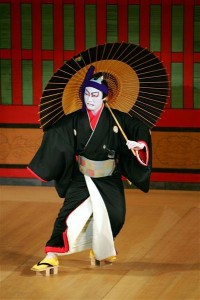Kabuki 2014/10/31
Last week I went to National Theater to watch Kabuki play. Kabuki is one of three major traditional Japanese theaters. Those theaters originated from Dengaku which has been people’s musical performance at agricultural festivals with around 1000 years history.
“ka-bu-ki” is composed with three elements.
“Ka” means traditional songs with old musical instrument, Shamisen.
“Bu” means elegant traditional way of dancing.
“Ki” means stylized performance usually with gorgeous costumes.
A harmonized combination of three elements can produce touching theater.
On that day the play started at noon and finished at 4:30. With three intervals between acts, net performance was 3 hours.
The play started with a spectacular scene of swimming in midair.
Towards the end of the play, son-in-law who mistakenly committed a murder, is troubled with either running away or giving himself up. Mother-in-law, her own son who is an official to arrest the murderer and his wife are confused each other. All of them struggle between moral obligation and humane feelings.
This play was written by Takeda Izumo who is famous Kabuki writer died in mid 18th century. The story is almost 300 years old. However modern Japanese sill can understand and sympathize the agony by being caught between moral obligation and humane feelings.
By watching Kabuki, modern Japanese realize again that old Japanese DNA is still running through modern Japanese blood.








